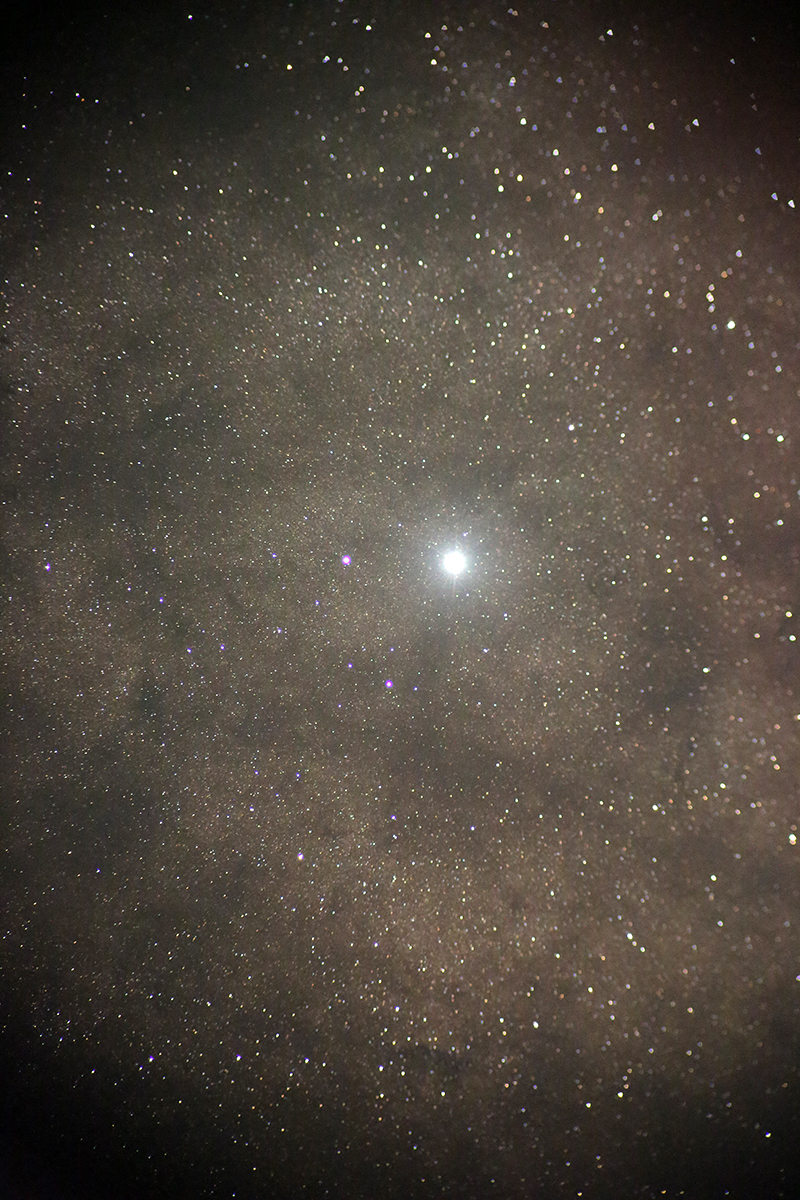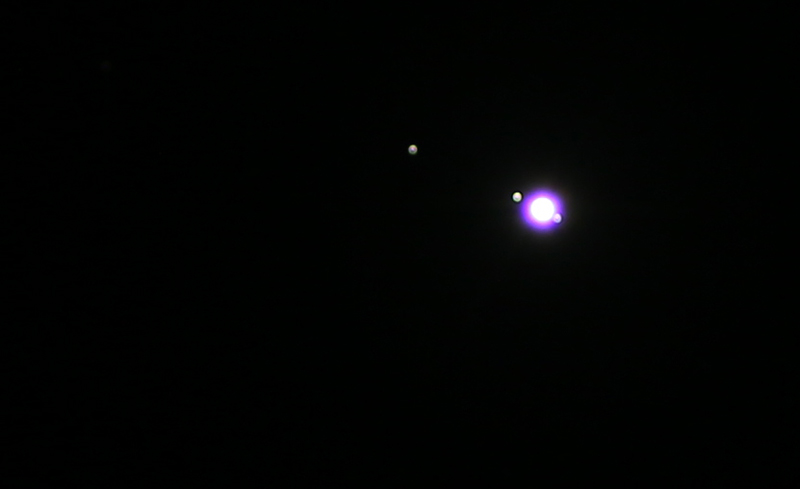Astronomy Report
Name: Janet Biggs Crew: 181
date: Sol 10 (23 May 2017)
Sky Conditions: Clear
Wind Conditions: Calm
Observation Start Time: 22:40
Observation End Time: 01:30
Summary: We finally got our two-star alignment!!! We had a great night viewing and imaging. Still lots to learn, but are totally excited about our first real steps! Our entire crew came out and we took turns viewing and trying different exposures.
We used the Telerad, 9 x 50 finderscope, Autoguide Scope, and laser pointer to find our two-star alignment. Once we confirmed ALIGN SUCCES, we slewed to Jupiter. Using the 25 mm eyepiece we were able to see three moons (As we are novices, please correct any incorrect identifications that we make).
We attached my Cannon 5D Mark III to the Autoguide Scope using the adapter Peter recommended. We photographed Jupiter using a wide range of ISO settings and time exposures. We then slewed to find M81. Our two-star alignment may have been off (we only used three calibration stars), or it may have been our inexperience, or lack of magnification as we had my camera on the Autoguide rather than an eyepiece, but we never clearly identified M81 (although we got some interesting photos trying). We then slewed to Saturn. We were able to image Saturn, but struggled with a good focus on my camera.
We are eager to get back out there!
Info on attached images:
Jupiter, ISO 200, 5 sec.
Saturn, ISO 2000, 30 sec.
Attempt at M81, ISO 10000, 30 sec.
Objects Viewed: Jupiter, M81 (attempted), and Saturn
Problems Encountered: No problems, other than focusing my camera.








